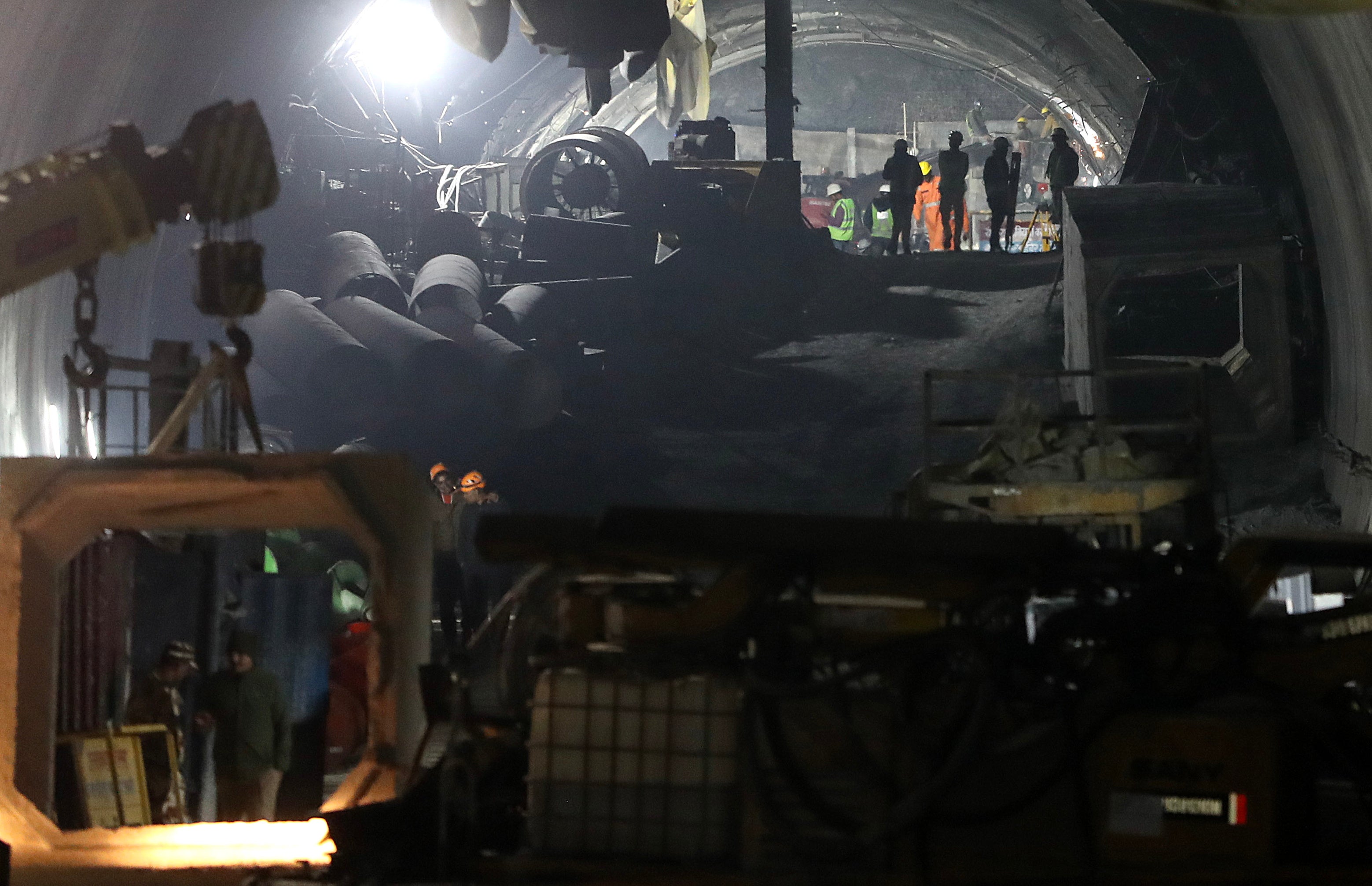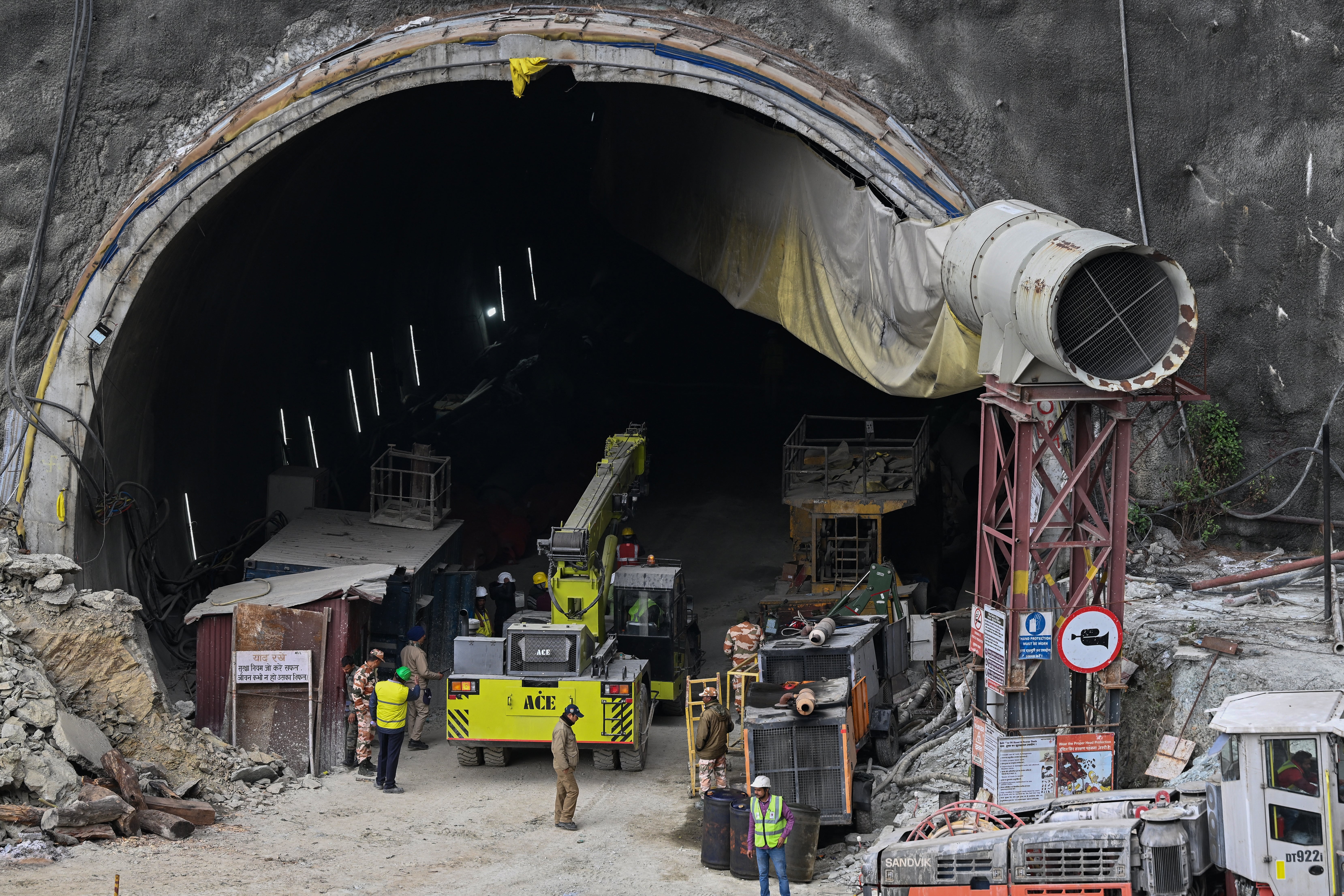What are ‘rat-hole’ miners? Controversial specialists brought in for final stretch of India tunnel rescue
‘Rat-hole miners’ appear to have played key role in final breakthrough to reach 41 trapped construction workers
Your support helps us to tell the story
From reproductive rights to climate change to Big Tech, The Independent is on the ground when the story is developing. Whether it's investigating the financials of Elon Musk's pro-Trump PAC or producing our latest documentary, 'The A Word', which shines a light on the American women fighting for reproductive rights, we know how important it is to parse out the facts from the messaging.
At such a critical moment in US history, we need reporters on the ground. Your donation allows us to keep sending journalists to speak to both sides of the story.
The Independent is trusted by Americans across the entire political spectrum. And unlike many other quality news outlets, we choose not to lock Americans out of our reporting and analysis with paywalls. We believe quality journalism should be available to everyone, paid for by those who can afford it.
Your support makes all the difference.A mining technique that has been prohibited in India over safety concerns has proven instrumental in rescuing the 41 workers trapped inside a collapsed tunnel in the Himalayas.
The technique dubbed “rat-hole mining” has been used to dig through the final stretch of fallen rocks and debris and reach the workers, who have remained trapped in the collapsed tunnel in Uttarakhand for 17 days.
Rescue workers began trying to drill through the collapsed portion of the tunnel using a US-made augur machine, which was flown in to the site, but it has broken down repeatedly and was deemed “irreparable” with a significant portion of the 60m debris wall still to go.
More than two dozen so-called “rat-hole miners” were called from Delhi and Jhansi in Uttar Pradesh to manually drill through the remaining debris, clear the passage and lay a pipe through which the workers can be brought out.
They successfully broke through to finally reach the men on Tuesday.

These workers are trained in narrow tunnel excavations and use handheld tools for digging through rock.
It is a primitive, perilous, and contentious technique primarily employed in India for extracting coal deposits through confined passages. The term is derived from its likeness to rats burrowing through narrow holes.
“Three of us will go inside the tunnel; one will do the drilling, another will collect muck and the third one will push the muck through the trolley,” Mr Rakesh Rajput, one of the miners, told Reuters.
The technique has been long used for the extraction of coal where miners excavate small pits, typically not exceeding 4 feet in width, to access coal deposits.

Once the coal seam is reached, lateral tunnels are excavated to extract the coal.
The mining method was widely practised across eastern Meghalaya state due to the narrow coal seams found there, as other methods remained economically unviable.
But rat-hole mining was banned in 2014 by the National Green Tribunal, the statutory body dealing with environmental protection cases.
It ruled that the technique was dangerous and unscientific after a case was brought over the deaths of several rat-hole miners, including some children.
Despite the ban, the technique remained rampant. In 2018, 15 men involved in rat-hole mining in Meghalaya were killed after they became trapped for days due to flooding. After rescue work stretching on for around two months, only two bodies could be recovered.
In 2021, six miners were killed in a similar incident after they were trapped in a flooded mine. The operation to recover the bodies was called off after a month and only three bodies were found.

Join our commenting forum
Join thought-provoking conversations, follow other Independent readers and see their replies
Comments